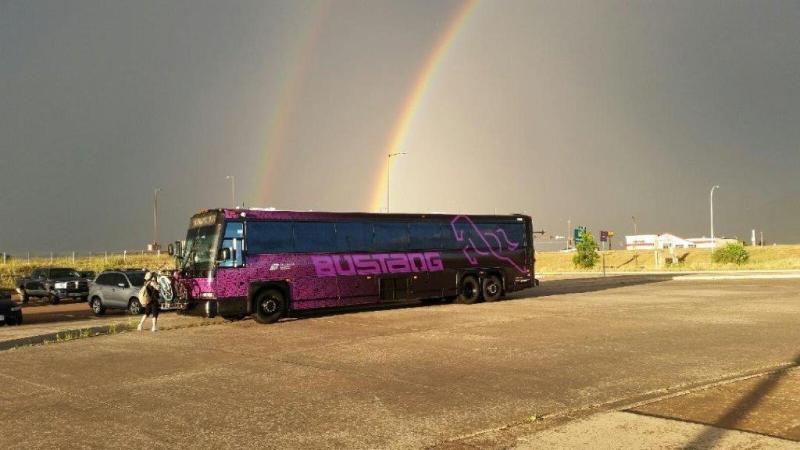Bustang Works and CDOT Should Expand the Service Throughout the Region

When the Colorado Department of Transportation stops planning for cars and focuses on moving people via bus, it actually does a pretty good job.
Bustang, CDOT’s interregional bus service, turned two in July. In its second year, the system provided about 156,000 trips, a 52 percent increase. That’s still not a huge number of people, but Bustang is not an extensive service. Advocates want to build on the momentum and bring the service to more of the region.
“We’ve seen that if you build it, they will come,” said Colorado Public Interest Research Group Director Danny Katz. “People are riding them in greater and greater numbers, and I think that highlights that there’s a real need, not surprisingly, to have options to get around our state.”
Right now Bustang operates three lines with a fleet of just 16 buses: the North Line between Denver and Fort Collins, the South Line between Denver and Colorado Springs, and the West Line between Denver and Glenwood Springs. CDOT did not offer weekend service until August.
CDOT should be running more buses on more routes, with greater frequency and more space on the roads dedicated for Bustang, said Katz, especially where CDOT is widening highways. A lot of public officials in the region agree. On Thursday, Katz delivered a letter to CDOT transportation commissioners signed by 41 local government officials from Vail to Colorado Springs asking for a general expansion of the service.
“It’s crazy it took us until 2015 for the state of Colorado to have an actual statewide bus system,” he said. “But now that we have it, people are using it, and so we should be investing more, we should be expanding it.”

Pueblo, Steamboat Springs, Durango, Grand Junction, and towns in the Eastern Plains all deserve a look for more service, Katz said. And an increasingly clogged I-70 corridor between the Front Range and the recreation destinations of the western mountains can’t be fixed with more asphalt. Same goes for I-25 traffic jams along the main road connecting Denver, Fort Collins, and Colorado Springs.
A high-speed train to the western mountains would be nice, but doesn’t seem likely any time soon. While a train along the Front Range seems more likely, the best option right now is to move a lot more people in a lot less space with rubber-tire transit.
“This is really the only way we’re going to be able to grow as a state — if we have these kinds of options,” Katz said. “So it’s definitely critical and now is the time to continue to grow and move beyond an initial launch, and get into having a real robust statewide system.”


